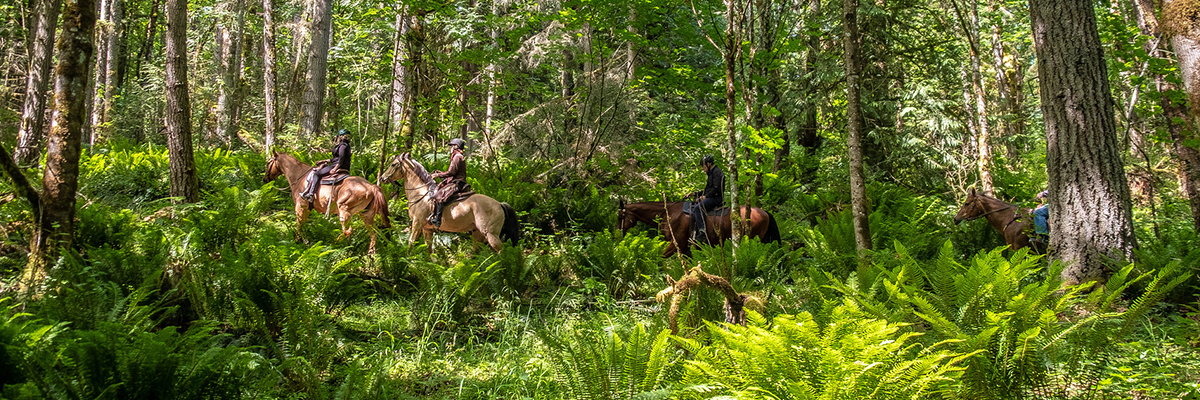Soaring Eagle

About the park
Soaring Eagle Regional Park is 790 acres of mature forests, wetlands, and wildlife habitat. Soaring Eagle Parks sits above Patterson Creek on the edge of the Sammamish Plateau along the western flank of the Snoqualmie River Valley. It is connected via forested corridors to the nearby Beaver Lake Preserve, Hazel Wolf Wetlands, and Patterson Creek Natural Area, which increases habitat for wildlife living in the area such as black bear, bobcat, black tail deer, and more than 40 species of birds.
Throughout Soaring Eagle Park, there are 12 miles of multi-use trails. The Pipeline Trail bisecting the park is wide and flat so it is common to see families with baby strollers out enjoying the trail. Soaring Eagle is also popular for mountain biking and trail running competitions.
Park activities and facilities
Dog walking
Hiking
Horse riding
Mountain biking
Nature observation
Parking lot
Porta-pottie
Volunteer
Location
26015 E Main Dr, Sammamish, WA 98074
Nearby bus stops
Routes 216, 219, 269, and 554 have stops at 228 Ave NE & NE 8 St and 228 Ave SE & SE 10 St.
Parking
Paved parking lot with room to accommodate up to five horse trailers at entry off East Main Drive. Parking is along Trossachs Boulevard at the south end of the park.
Trailheads
Main entry: West side of the park in Sammamish via 228 Ave Southeast and Southeast 8th Street to the end of East Main Drive.
South entry: At the end of Trossachs Boulevard via Southeast Duthie Hill Road.
Through Beaver Lake Preserve: On West Beaver Lake Drive, half a mile east of 254th Place Southeast.
Park history
Abridged from the draft January 2018 Soaring Eagle Forest Stewardship Plan:
Now surrounded by residential neighborhoods, people have lived in the area surrounding Soaring Eagle Park as far back as 12,500 years ago. Prior to contact with white settlers, this area was occupied by the lower Snoqualmie peoples who lived along the Snoqualmie river, relying on its wetlands, creeks, and streams. Evidence has shown there once was a significant historic travel corridor through Soaring Eagle Park. Traditional travel corridors would have been burned to maintain them and to encourage game animals to frequent the area, which is consistent with charcoal found in the park.
Native peoples planted, cultivated and harvested both wild and domesticated plants, collected berries, nuts and roots, hunted game, fished, quarried stone, and built irrigation canals and roads or foot paths in this area.
Evidence of charcoal is an indicator that Native peoples used fire to clear the land for acorn gathering, to flush game, create habitat for food such as huckleberry, to create meadows to attract game or as an act of war.
Skipping ahead a few centuries, this area was Washington State school trust land known as Section 36. Soaring Eagle was renamed in 2001 by a second grader at Samantha Smith Elementary School in Sammamish in a contest sponsored by King County Parks.

 Translate
Translate